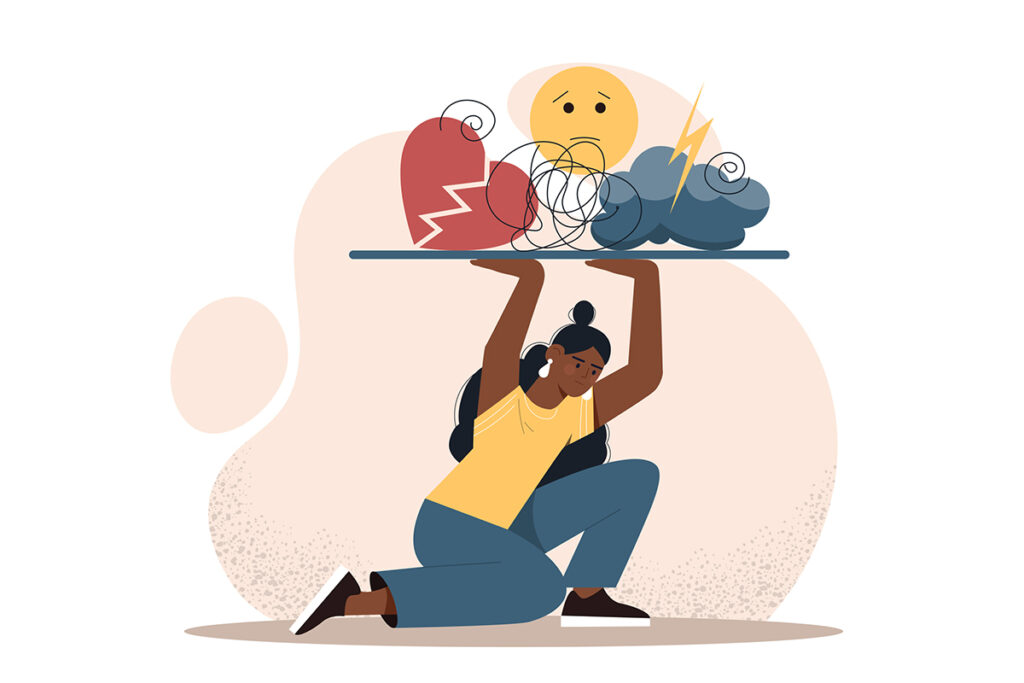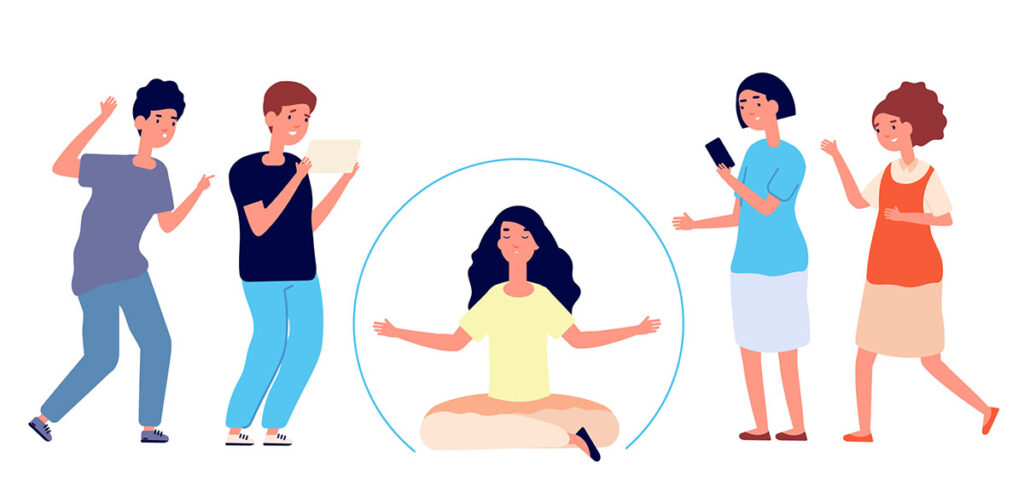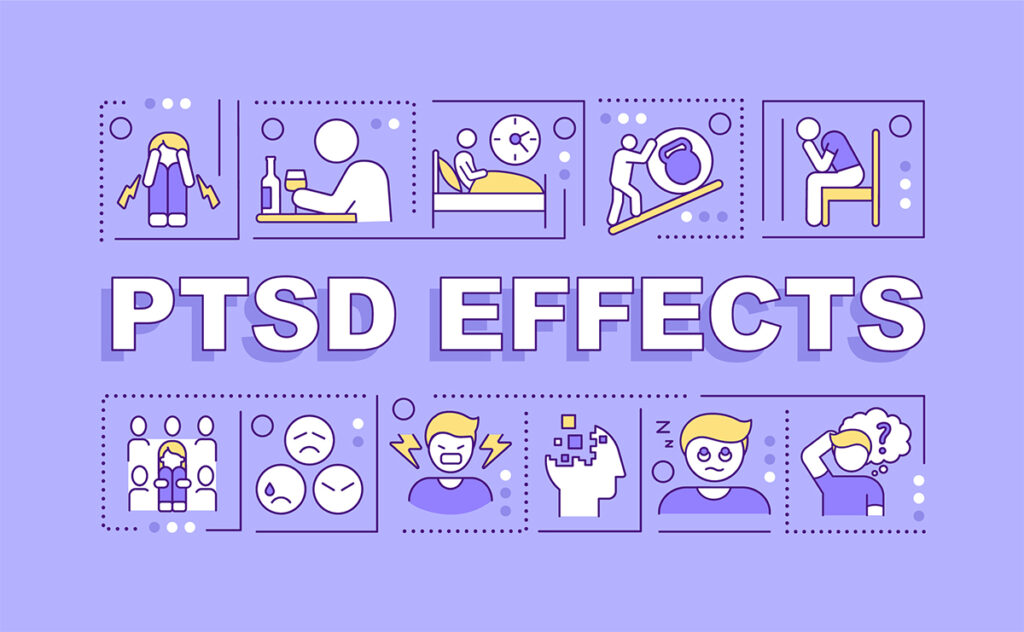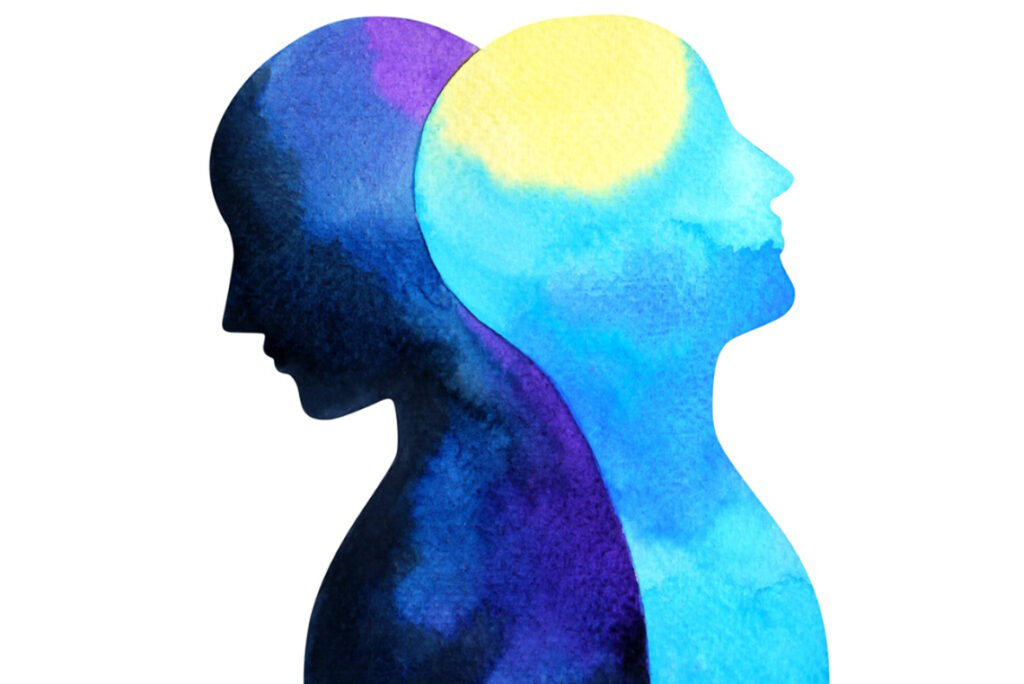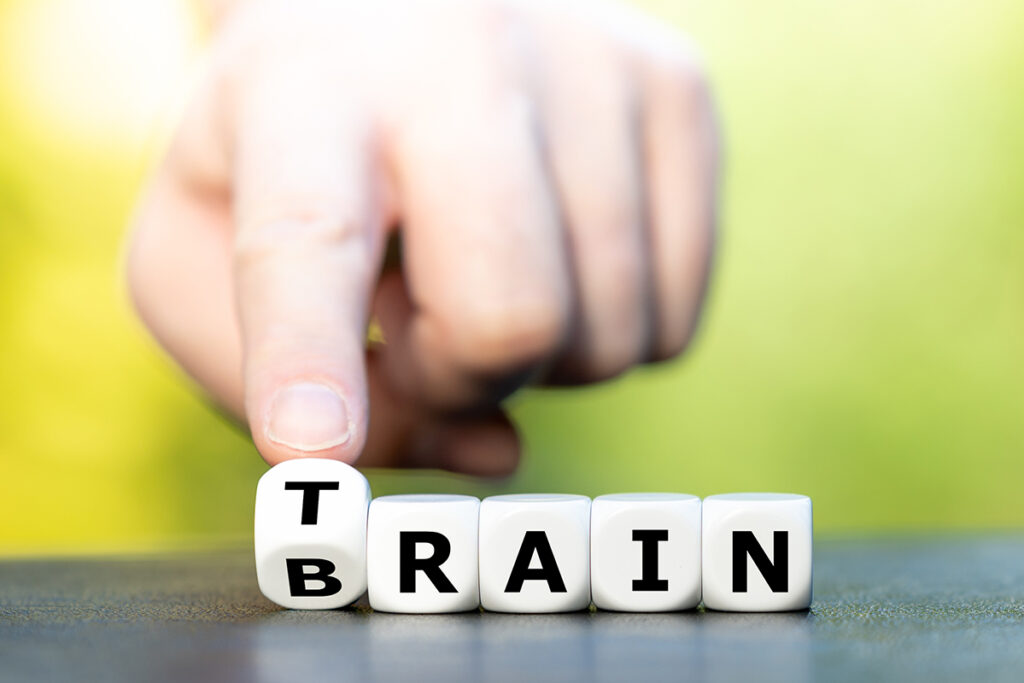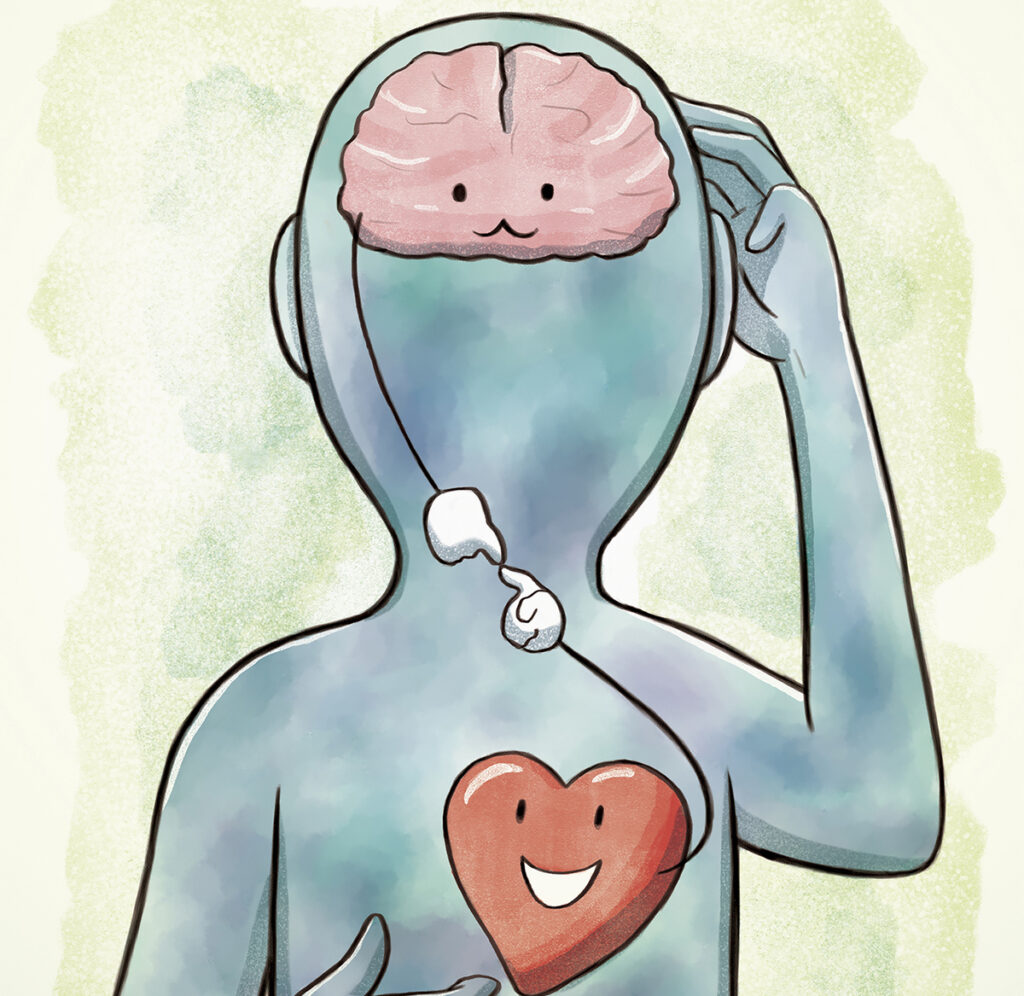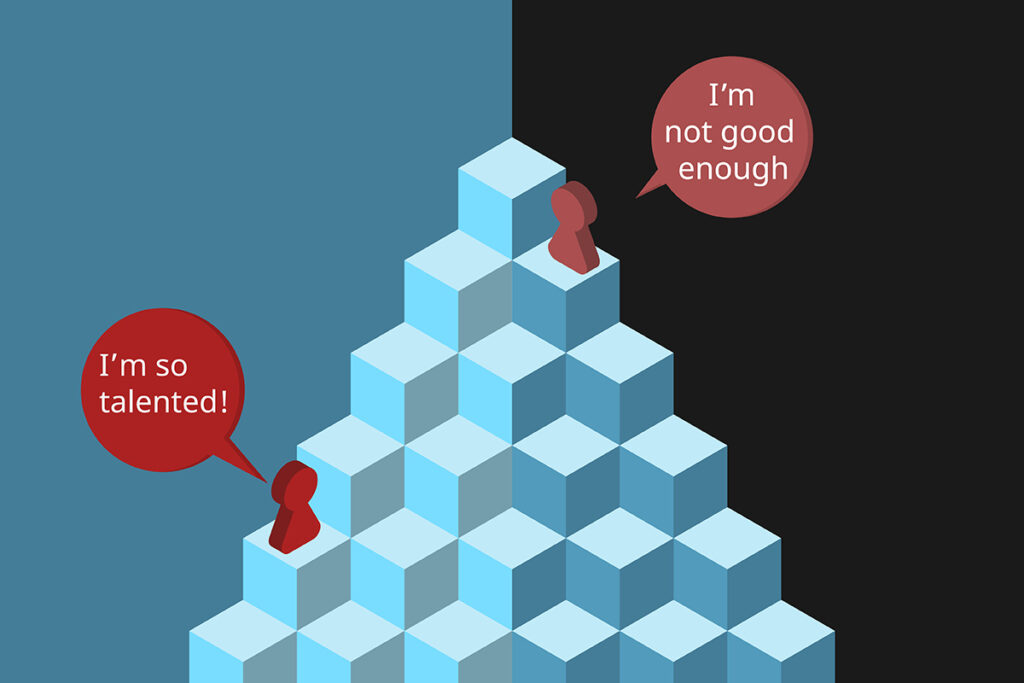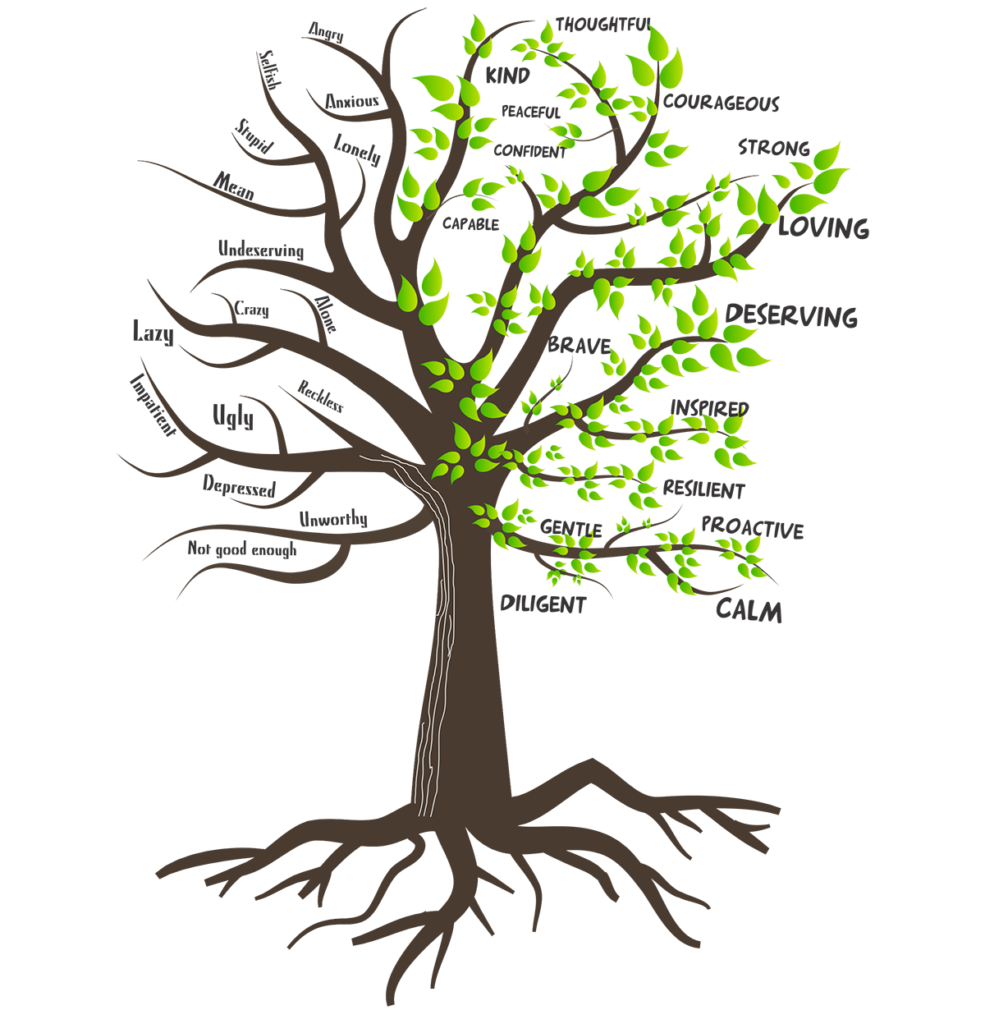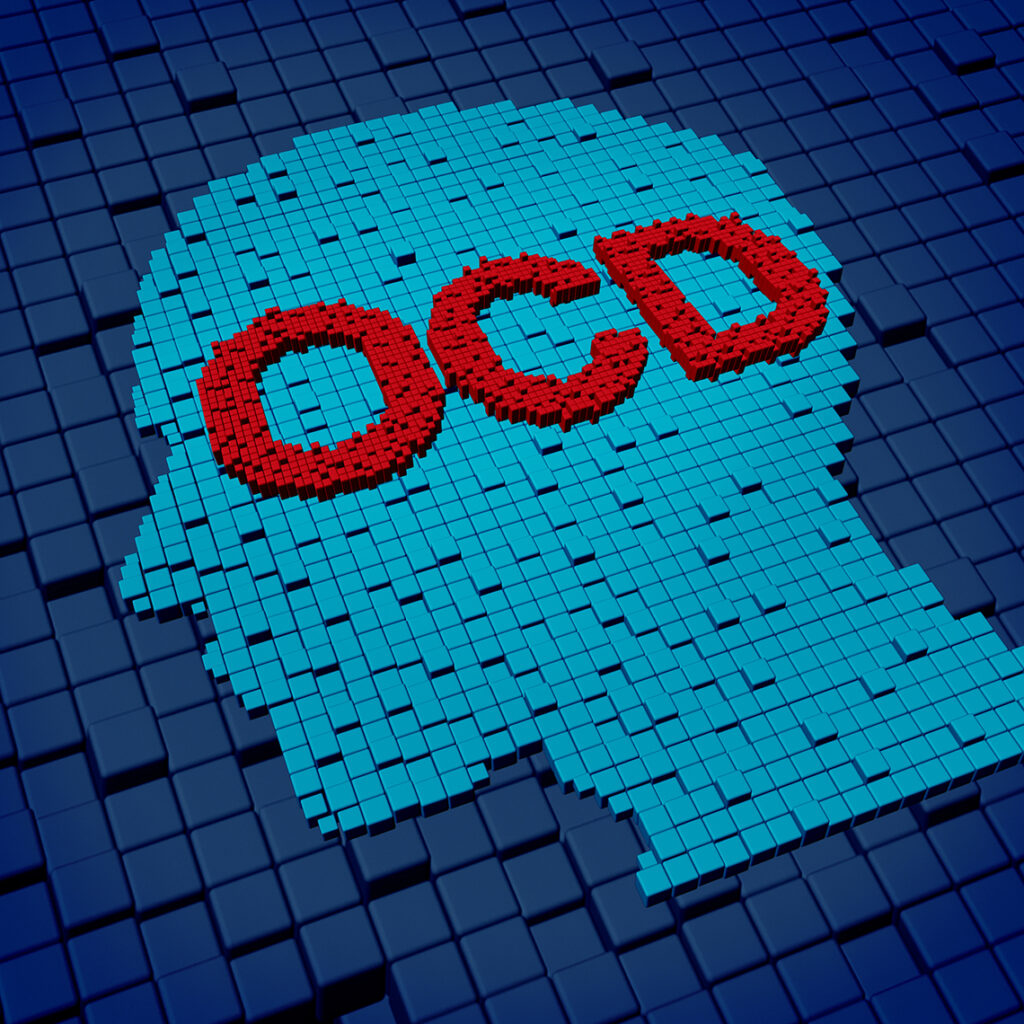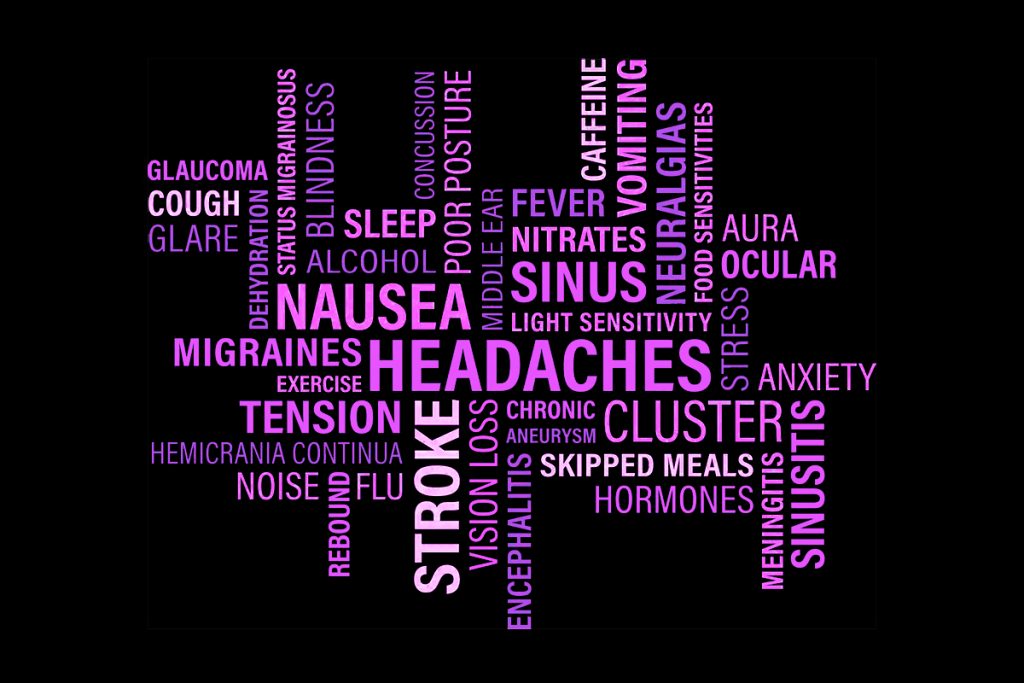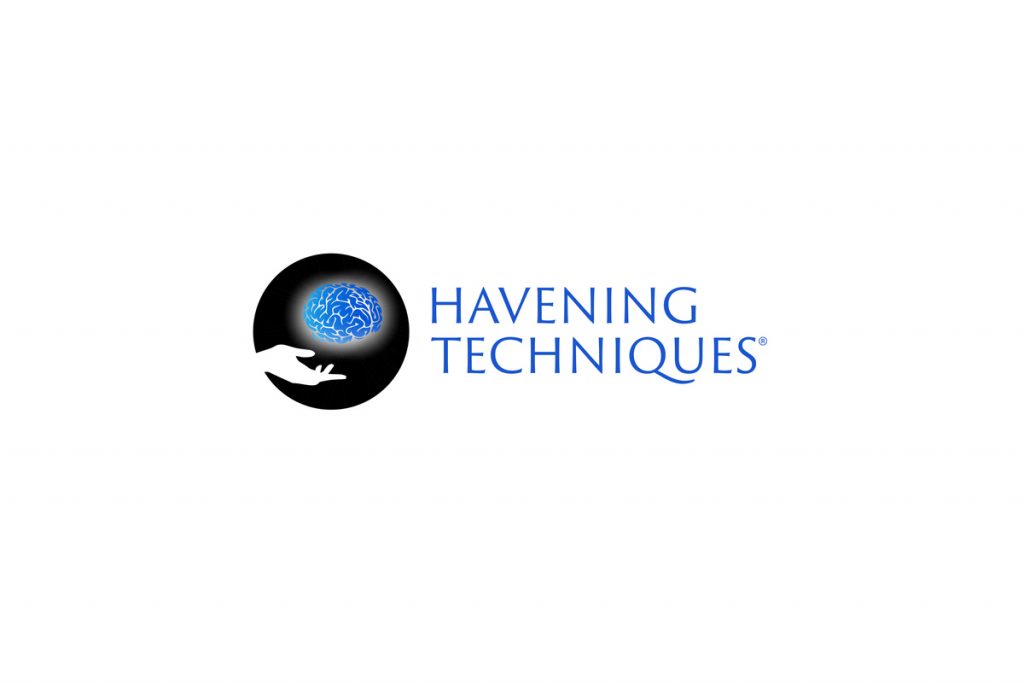ABOUT OUR BLOG
New insights in the world of Neuroscience have led to the development of revolutionary techniques for moving into an intimate relationship with the neural pathways that define your personal experience of your world.
Are you ready for empowered change? It’s time to live your excellence. Read on to explore how these new advances create opportunities for harnessing the power of neuroplasticity, and create a space for inspiration to flow.
Related Resources
For Healing
How To Stop The Brain From Going Into Stress Mode
In this psychoeducational video, Dr. Kate Truitt explores how the brain and body store sensory memories that can be used to shift out of stress and into peace. Through the practice of mental rehearsal, it becomes possible to connect present-day stress responses with memories of calm, confidence, and resilience.
How to Build a Healthier Relationship with Difficult Emotions
We all have moments when our emotional world feels too big, too heavy, or too much. In this video, I’ll guide you through a trauma-informed framework for noticing, naming, and nurturing your emotions—so you can stop fighting them and start using them as data for healing.
A Guided Meditation to Rewire Your Brain for Confidence
One of the most profound ways we can advocate for ourselves is by believing in our capacity to grow, adapt, and heal. This confidence-building meditation is designed to help you reconnect with your strengths and rewire old narratives that say you’re not enough. Every breath becomes a vote for your worth.
Welcome to Our Blog
"Your Brain's Toolkit for Transformative Healing and Personal Empowerment"
Welcome to Dr. Kate Truitt & Associates Blog—Your Resource for Neuroscience-Based Mental Health and Resilience Strategies
At Dr. Kate Truitt & Associates, we believe that healing and thriving are within your reach. Our blog is dedicated to providing expert insights on neuroscience, mental health, and trauma recovery, blending cutting-edge research with compassionate, practical strategies. Whether you’re looking for tools to manage anxiety, build resilience, or navigate the complexities of healing, our articles offer science-backed guidance tailored for both individuals and professionals. Based in Pasadena, California, we offer in-person and telehealth services, ensuring support is accessible wherever you are. Explore our latest posts and start your journey toward empowered well-being today.
Featured Article
Science shows that connection is medicine for the mind. When we reach out, share, and care, our brains begin to relearn safety. Healing, after all, doesn’t happen in isolation. It occurs in the community.
Read MoreLinks to all blog posts...
Healing from PTSD in Community: The Power of Safe Connection
Healing from PTSD isn’t just about what we do in solitude; it’s about what happens when we allow others to sit beside us in the dark and help light the way forward.
Read MoreSelf-Advocacy Redefining Mental Health from the Inside Out
Self-advocacy means choosing—again and again—to live in partnership with your brain. To create spaces, internally and externally, where it’s safe to feel.
Read MoreTrauma Is Not Your Story: Reclaim Your Identity After Abuse
For many survivors of abuse, the question isn’t “Who am I?” but “Who did I have to become to survive?” You are not your trauma. You can reclaim your identity after abuse.
Read MoreThe Neuroscience of Traumatic Grief: How Trauma Affects the Brain and How to Heal
Grief is a natural and deeply human response to loss, an emotional process that allows us to adapt to life without someone we love. But when grief is intertwined with trauma, the experience can profoundly alter the brain.
Read MoreStress, Trauma and the Brain: Why You React Before You Think
When you experience repeated stress or trauma, your brain adapts by creating shortcuts for survival. This is why you might overreact to situations that logically don’t seem threatening. Your brain isn’t malfunctioning. It’s trying to keep you safe.
Read MoreRelationship With Your Inner Self Through Brain Partnership
What if 2025 became the year you rewired your brain for resilience—building a foundation that empowers you to navigate life’s challenges with strength, calm, and grace?
Read MoreNavigating Holiday Stress by Setting Healthy Boundaries
As magical as the holidays can be, they also come with their own set of challenges. This is where setting healthy boundaries becomes a powerful ally.
Read MoreUnderstanding the Neurobiology of Suicidal Thoughts
Suicidal thoughts can be deeply frightening. Understanding their origins, the neurobiology of suicidal thoughts can help in how we approach and deal with them.
Read MoreBuilding a Resilient Brain After Loss for Long-Term Healing
This article by Dr. Kate Truitt addresses building a resilient brain after loss and provides a wealth of tools for long-term healing.
Read MoreUnderstanding PTSD and Complex PTSD: A Path to Healing
In this article, Dr. Kate Truitt helps us understand the development of conditions like PTSD and Complex PTSD, explaining differences and healing opportunities.
Read MoreThe Phoenix Journey: Embracing Post-Traumatic Growth
Have you heard of post-traumatic growth? Just as the mythical Phoenix rises from its ashes, we too can rise from our difficulties stronger and more resilient.
Read MoreWhy Relationships Suddenly Change After Loss
Have you ever felt like things suddenly changed with a friend or family member after a significant loss? I delve into why relationships suddenly change after loss.
Read MoreGrief and Healing: Leveraging the Brain’s Power for Growth
For many, the mere mention of grief summons images of darkness and pain. But what if our response to grief could be reframed? What if this emotion, with its stifling weight, could be transformed into a vehicle for growth?
Read MoreRipple Effect of Positivity Empowering Advocates to Inspire Change
It’s truly incredible how something as simple as a positive word or action has the power to create a ripple effect, inspiring others and leading them to meaningful change.
Read MoreThe Neuroscience of Seasonal Affective Disorder
Is there a shift in your moods? Are you feeling down or maybe a little depressed? These feelings may be signs of Seasonal Affective Disorder (SAD).
Read MoreHealing Through the Art of Storytelling
Healing Through the Art of Storytelling. In the face of unspeakable loss, one of the things I turned to is writing.
Read MoreNavigating Trauma: How to Build Your Emotional Safe Space
Trauma impacts our lives and affects us in countless ways. You have the power to create your emotional safe space and create healing from within.
Read MoreThe Neuroscience Perspective on Suicidal Thoughts
Within our brain, intricate processes and pathways are at play when it comes to suicidal thoughts. By understanding these processes, we can gain valuable insights into prevention and treatment strategies.
Read MoreNeuroscientific Approach to Resilience Overcoming Adversity
Resilience is an incredible skill for overcoming adversity and difficult experiences, and thriving through challenges. It is essential for our mental health and well-being.
Read MoreOvercoming Resistance to Change A Plan for Thriving
Taking advantage of opportunities for healing and self-empowerment requires change. In this article, Dr. Kate Truitt addresses overcoming resistance to change.
Read MoreAllyship With the LGBTQIA Community
In honor of Pride Month, I would like to highlight something we embody in our practice known as “Allyship.” It forms the foundation of our Affirming Therapy.
Read MoreDissociation and Defense Rage: Two D’s of Trauma Responses
In this article Dr. Kate Truitt delves into the two D’s of dissociation and defensive rage, which seem like completely different ends of a spectrum but share a common objective.
Read MorePeople Pleasing & Fawning Trauma Response Forfeiting the Self
In this third article Dr. Kate Truitt explores the fourth F of trauma responses—Fawning, also known as people pleasing.
Read MoreTaming Trauma Survival Responses of Fight Flight and Freeze
In this article, part of a four-part series, Dr. Kate Truitt explores the trauma survival responses of fight, flight, and freeze.
Read MoreTrauma Labels and Diagnoses: Understanding Trauma and Stress
In this article we will explore trauma labels and diagnoses and how these conditions unfold neurobiologically and show up in our lives.
Read MoreNeurofeedback: Training for Your Brain
Neurofeedback uses real-time feedback to assess, train and refine your brain's electrical activity, not only for mental health but also performance enhancement.
Read MoreCreating Possibilities for Success During the Holidays
For many of us the holidays come with a little dread that these social and family situations might move us, or even forcefully yank us, out of our comfort zones.
Read MoreGOD Box Gratitude and Wins Exercise: Two Therapeutic Tools to Help Us Live Our Best Lives
This blog article presents the G.O.D. Box and the Gratitude and Wins Exercise. These two tools can help us stop rumination and work toward living our best lives.
Read MoreHavening: Neuroscience Insights Shine Light on Ancient Healing
Havening Techniques is a combination of the ages-old psychosensory healing power of touch combined with awareness of what is happening in that mind-body connection that traumatizes people.
Read MoreHealing Trauma: The Mind and Body Remember
Is there a scientific explanation for a connection between deep emotional trauma and stress and physical pain and discomfort such as migraines, gastrointestinal disturbance, back pain, and more? The answer is there most definitely is.
Read MoreBreaking the Pattern of People Pleasing to Live Our Best Lives
In this article we will explore the fourth survival response, Fawn, which can be most easily described as people pleasing.
Read MoreStop Shame and Take Your Power Back
It is important for us to understand where the deeply painful emotional experiences of shame originate, because in the acknowledgement of their roots we find opportunities for recovery and healing.
Read MoreSNAP Your Way out of the Grip of Generalized Anxiety
Did you know that the experience of anxiety is a part of daily life? Like all of our emotions, it exists to alert us concerns so that we may take action and create change. Generalized anxiety, on the other hand, is just there in the forefront.
Read MoreTransforming Negativity Bias into Positive Empowerment
Did you know that your brain is hard-wired to look for negative, difficult, or painful things? This is called a “negativity bias,” which means that in your data-processing system, anything negative gets priority attention.
Read MoreRejection Sensitive Dysphoria Understanding and Healing
Rejection is difficult for anyone to experience, but some people undergo it with much greater intensity than most others. If that is the case for you, it may be that you are experiencing what is known as rejection sensitive dysphoria (RSD).
Read MoreWake Up on the Right Side of the Bed Using Neuroplasticity
Waking up on the wrong side of the bed is a real thing. But we have the power of neuroplasticity on our side. Because of our brains are malleable, we have an opportunity to make changes to our neural connections that can help us experience a good night of restful sleep.
Read MoreDeepening the Relationship With Emotions Empowers Healing
One of the most critical methods for developing a sense of personal agency is learning to be in deep relationship with your emotions.
Read MoreChallenging Difficult Thoughts to Create Personal Empowerment
Anytime you notice that your brain is beating you up to keep you "safe," take a moment for challenging difficult thoughts to find kinder ways of getting safe.
Read MoreWelcome to the New Year Reframing the Difficult Into New Opportunities
The new year is upon us—the time where we traditionally review the previous year. In this article focus on the opportunities that await you in the coming year.
Read MoreFinding the Inner Motivation to Overcome Procrastination
Productive procrastination seems productive, so it can feel good, but if you are putting off tasks that need to be done to do other tasks, it could be building your stress level, and if that continues to build you could be heading for burnout.
Read MoreObsessive-Compulsive Disorder Get Unstuck from the Cycle
Research shows that ERP is effective in treating obsessive-compulsive disorder, or OCD. Mindfulness techniques and self-havening touch provide added support.
Read MoreCompassionately Leaning into Failure to Create Success
Failure can hurt—our egos and self-brain often have a hard time dealing with it, but failure has helped us learn and grow since the earliest days of our lives.
Read MoreBreaking Unhealthy Habits: Change Through Finding Purpose
Finding our purpose significantly increases the ease with which we are able to create sustainable change. It helps us more readily link into new behaviors that align with our desire to live our purpose.
Read MoreOpening-Up Anxiety Door Creaks Open on a Different World
“Opening-Up Anxiety” is about how we deal with change. If you are uneasy about restrictions being eased after many months of isolation, you’re not alone.
Read MoreShame and Self Judgment Opportunities for Self-Healing
Shame is awful to experience, whether we are being shamed by others or shaming ourselves, but as humans we are hard-wired to experience feelings of shame. Learn about the opportunities for self-healing in shame and self-judgment.
Read MoreDomestic Violence: Emerging Safely From the Pandemic World
Some people are not safer at home, and in fact, the home setting is a real place of danger for many who live with the threat of domestic violence. If you are one of those people, you may be in need of help and support. If you are not one of those people, but think you may know one...
Read MoreThriving Through Pain
The experiences of physical pain and psychological trauma go hand-in-hand. In order to create empowered change and self-awareness around chronic pain, we need to explore the connection between the mind and body.
Read MoreCalming the Fear Brain
Recognizing when your survival brain is throwing up warning signs from your past can empower you to find balance between what your fear brain would have you do, and what you would choose to do. In this article I want to show you some tools for resilience and explain how they work.
Read MoreSetting Boundaries in Your Relationships
In this article Dr. Kate Truitt helps you explore the survival mechanisms you employ in relationships, how much you value what you need in your relationships, and what you can do to help create boundaries that lead to the relationships you want.
Read MoreTraversing Our Gradients of Emotions
As humans, we are naturally moving in and out of different brainwave states every day, and much of that is driven by emotions. This is a sign of a healthily functioning brain. There is a good argument to be made for intentionally experiencing different emotions, whether you might consider them to be “good” or “bad.”
Read MoreWelcoming Gratitude Throughout the New Year
This may sound counterintuitive, but the journey toward creating success and well-being requires leaning into the difficulties you are experiencing. I suggest that you bring a little bit of 2020 with you on your journey in 2021.
Read MoreHow do You Plan to Top This Year?
Has 2020 been a challenging year for you? I will take a guess and say that it has. Are you looking forward to brighter days ahead? Have you started thinking about what your new year will look like?
Read MoreHugs and Home for the Holidays During Challenging Times
With everything that has befallen all of us in 2020, we must assume the holiday blues may be more widespread than usual this year. This means we must get creative when it comes to getting together, but we do need to stay connected.
Read MoreOvercoming Worry by Deepening Your Relationship With It
Why do we worry? So often my patients will tell me that worry is dumb, and that there is no need for it. Actually, we do need to worry, but we need to put it into an appropriate context. It is important to go back to the beginning of the worry process and notice the “Why” of it.
Read MoreNeuroplasticity Overcome and Create a Resilient Brain
The opportunity you have to heal your brain and keep moving forward is made possible by something called neuroplasticity—the key to building a resilient brain. We show you how to show you how to seize that opportunity in this in-depth article.
Read MoreNeurofeedback Training the Brain to Calm
We introduce Neurofeedback: a tool we teach that allows you to create your resilient brain, addressing stress and anxiety, compensating for past damage that has been done, enhancing learning capacity, and even healing through the difficulties brought on by our new challenges.
Read MoreOvercoming Burnout: Self-Compassion Provides the Healing Touch
Have you been feeling lately like you’re not living up to the expectations you have for yourself? Do you feel you are losing some of your former optimism? You may be on the road to burnout. In this article we help you ways to successfully managing the stress that can lead to burnout.
Read MoreLeaning Into Grief and Loss to Create Healing
Grief is an experience of mourning and deep honoring. One thing I have learned through my own journey is that the experience of grief and loss has a softening effect: it is so important for us to save space, be conscientious and kind toward our feelings and ourselves as we navigate these deeply painful times.
Read MorePandemic Anxiety Healing Power is in Your Hands
The COVID-19 Pandemic and its associated stay-at-home orders and social distancing have the potential to induce various manifestations of anxiety and stress. Health anxiety and anxiety-induced stress are normal reactions. You have the power in your hands for self-healing and creating calm around you.
Read MoreHealth Anxiety and the Coronavirus Pandemic
A person with health anxiety will often misinterpret non-serious physical symptoms and attribute them to something more serious especially during a pandemic. Some symptoms produced by anxiety can include muscle pain, chest pain, heart rate changes, headaches, and dizziness. This can heighten existing anxiety.
Read MoreTelecommuting for Success
Telecommuting presents unique opportunities (no commute!) and challenges (it's awfully easy to do house chores or enjoy a binge watching session). From battling productive procrastination to overcoming loneliness, telecommuting creates ample opportunities to grow into our best self.
Read MoreFour Reasons Survivors of Sexual Trauma Remain Silent
On the heels of the #MeToo Movement and various scandals in the media that have shed light on the impact of sexual trauma worldwide, more and more survivors of sexual abuse and assault have been empowered to speak up and share their stories. However, many still do not come forward. In this article we explore the reasons behind their silence.
Read MoreLiving and Loving With Chronic Pain
While there are millions of individuals dealing with chronic conditions, it is rare to hear anyone talking about it. Many people don’t want to burden the people around them with their pain or illness, and chronic pain can be difficult to talk about and especially hard to understand. Many times they find it isn’t worth talking about.
Read MoreThe Havening Techniques Neuroscience in Healing
The Havening Techniques system is comprised of protocols and methods that rely on the electrochemical makeup of our body to create healing.
Read MorePanic Attack vs Anxiety Attack
It’s not hard to understand why panic and anxiety attacks have become conflated. They have enough symptoms in common that the lines can become blurred, even for the sufferer. What is the difference between a panic attack and an anxiety attack? WE explain in this post.
Read More



















